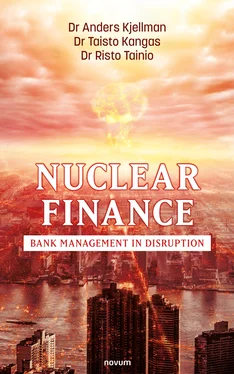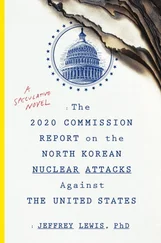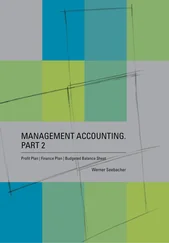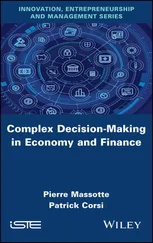These institutions were distinguished by their emphasis on short-term investment performance, a heavy use of leverage, and a willingness to move in and out of markets – whether equities, bonds, currencies, or commodities – in a relentless quest to maximise returns. In the early twenty-first century, the creation of the shadow banking market in the USA made things even worse and in the aftermath of the 2008 global financial crisis, we were facing a massive printing of new central bank money, this time called quantitative easing (QE). The large-scale asset purchases of bonds and other financial assets (2008–2021) by central banks, is a form of expansionary monetary policy, whereby a central bank expands its balance sheet and buys financial assets (mostly government bonds), in order to stimulate the economy, increase the liquidity in the economy, save banks by increasing their liquidity, or even by buying a stressed bank’s equity. The nuclear cocktail is ready to explode again. So, how should a banker prepare for this transition?
Change, data, methodology and experience
We have worked in different management positions within the banking sector for over three decades, from local banks to the world’s largest investment bank. Although we have worked primarily with banking in Europe, we also have experience from Africa, Asia, as well as North and South America. Another aspect of our work has been to advise bank authorities, the World Bank, EBRD, governments and bank management. We have also had the opportunity to write doctoral dissertations about banking (Kjellman, 1997; Kangas, 2006) as well as articles and books on excellence in banking (Kjellman, Björkroth, Lindholm & Ranki, 2004). This experience has naturally affected our research methods and approaches to the complexity of banking. From a theoretical point of view, we follow in the footsteps of many other great thinkers and argue that Culture plus the environment plus the past plus the present situation plus future (realistic or unrealistic) aspirations will affect the outcome; and that some factors are more critical than others when it comes to the good performance of banks.
Our data comes from our own experiences, structured and unstructured discussions with bankers, three questionnaires sent to the managing directors of banks, and financial data from banks. Over the years, our meetings and discussions around this book project have resulted in joint publications in scientific journals as well as many individual scientific and newspaper articles; and it has not been an easy job to put this book together. We have eagerly analysed issues like luck, the halo effect, bank platforms, AI and machine learning. However, we have always ended up with a common view concerning the complexity of banking. And hopefully, we have managed to narrow it down to five fairly easy to remember issues of successful banking in the 2020s and beyond.
From a theoretical perspective, we do not wish to lock ourselves into just one approach. Instead, we intend to go in a more holistic direction, partly based on the macroeconomic level of demand, supply and expectations, and on the microeconomic bank level, based on the strategy tripod suggested by Peng (2006). The strategy tripod is an approach that can explain bank and corporate behaviour, based on 1) industry, 2) firms and bank resources, and 3) institutional development. For example, Porter’s (1990) industry-based view asserts that industry factors shape a bank’s competitive advantage in the global market. Barney’s (1991) resource-based view argues that a bank’s internal resources and capabilities determine the bank’s growth and performance. By comparison, institutional factors have often been treated as contextual factors and been taken as exogenous factors by management scholars. As you will see after a while, in this book we have agreed that some factors are more critical than others, thereby drawing on the Critical Factor Theory suggested by Kjellman (1997) and inspired by the late Prof. James “Jim” March at Stanford.
Due to the fact that, we will analyse the changing content of a bank manager’s work and the changing banking industry, it is important to know what the and word means between a bank manager’s work and the transition of banking. The and word here has three interpretations: correlation, causality, and independence-interpretation. At the same time, we can say that this book is about the past, present and future of banking.
The hard core of traditional bank management is to master something that is, in abstract terms, usually called the ‘analysis of credit risks’. It refers to the capability to analyse and screen potential borrowers and to allocate funding and grant loans. It is not, however, enough for a bank manager to find customers, who are willing to take loans. They also need to be able to pay their loans back, with a margin, in an agreed time. Today, the deregulation and printing of money – or quantitative easing – by FED, ECB and other central banks has changed the way we look at money. The speed and amount of money has reached unprecedented heights. Furthermore, the lines between the real and financial aspects of business life have blurred as well.
Another source of risk in the new financial world relates to competitors and counterparts. The fall of Lehman Brothers on 15 September 2008 pushed the entire world into financial turmoil. Predicting the moves of rivals is inherently uncertain, especially when the rivals are also trying to predict our behaviour. Choosing to be different from rival banks implies risk, as well as doing things similarly does. Shadow banking or bank activity outside the balance sheet extended the operations of traditional banks; however the practice also brought in new competitors and risk. It is especially important for management to be able to assess how competitive moves may affect the values of the credits and liquidity of the collaterals. A third source of credit risk comes from technological change. Artificial Intelligence (AI), robot trading, derivative strategies and digitalisation of bank activities will bring in new types of risk, i.e., programming errors, fraud, hacking and new, unpredictable cyber wars.
All of this is connected to a bank manager’s daily work. In addition to the analysis of credit risks and uncertainties, bank managers must carefully control the balance sheets of the bank, because the capital level of banks is historically seen as low and vulnerable.
Bank managers are affected by culture, environment and egos
Bank managers are influenced by the culture and environment that they live in (see Figure 2.1). A bank manager’s life space, based on past experiences, the present situation and future aspirations, will affect the choices they make concerning the bank’s decisions. This line of reasoning is inspired by Lewin’s field theory, which in recent years, has become one of the most popular theories in psychology. We have to recall that bank managers are socially influenced individuals. They live in their current life space and have experienced the past as well as having aspirations for the future for themselves, their families and the bank. These aspirations will be one factor among many other potential factors that will explain how bank managers will lead and act in their banks during periods of growth as well as decline.
Bank managers can choose between a profusion of change strategies for the banks they run or are part of. Furthermore, bank managers, together with boards of directors and owners, must decide on which banking business areas the bank will act; i.e., 1) traditional or/and 2) capital-based banking and “casino”, shadow banking. We have narrowed the strategic options down to two main potential strategies that a bank manager might pursue: 1a) a traditional long-term strategy, usually with a modest risk for the bank. However, this traditional bank strategy may also include sub-strategies like: 1b) a growth and profitability focused strategy, which is too often applied during good times, and often during bad times leads towards 1c) a merger-focused strategy, in which the bank is fighting for its survival. The second major strategy that a banker faces is to decide how much capital-based banking and shadow banking the bank will be able to indulge in.
Читать дальше












